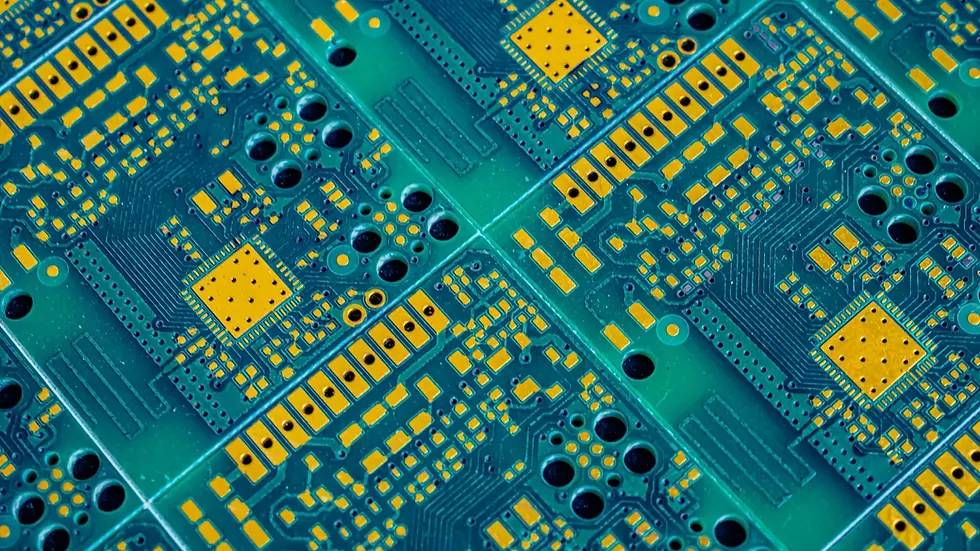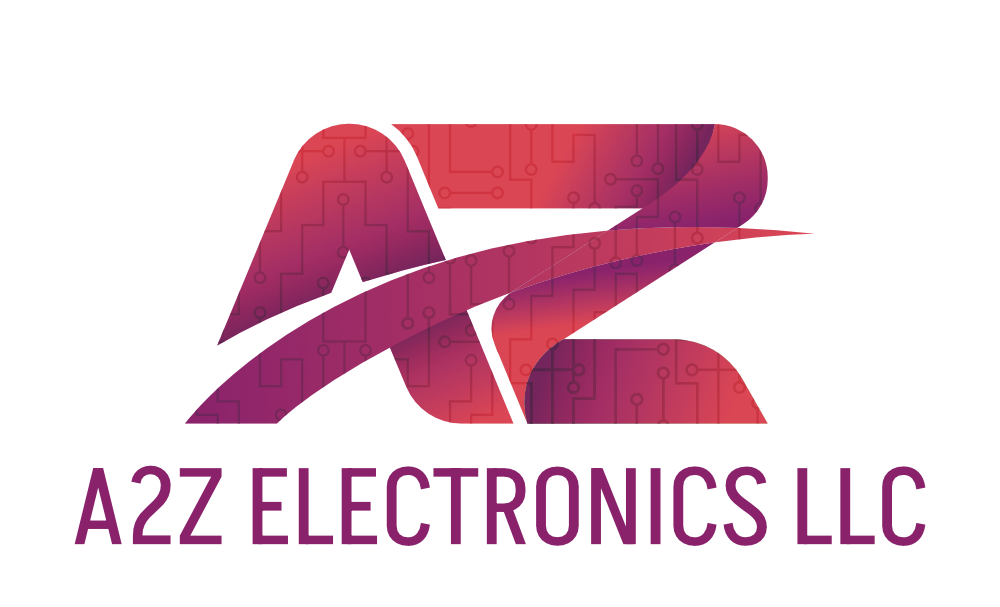Rigid PCB: Meaning, Types, and Common Applications
- Harshit Shah

- 3 days ago
- 5 min read
Updated: 4 hours ago

In today’s fast-moving electronics world, devices are expected to be smaller, faster, and more reliable. At the heart of these devices lies the printed circuit board—a vital foundation that holds and connects electronic components. Among the different types of printed circuit boards, the rigid PCB remains one of the most widely used due to its strength, reliability, and ability to support complex circuits.
OEMs across industries, from consumer electronics to aerospace, are increasingly relying on rigid PCB boards to streamline assembly, enhance product longevity, and maintain consistent performance under stress. Their robust construction and compatibility with high-volume production make them an ideal choice for scalable, high-performance manufacturing.
If you are looking to build long-lasting, high-performance electronic products, understanding the rigid PCB meaning, its types, features, and applications can help you make better design and production decisions.
Key Takeaways
Rigid PCBs are solid, durable boards used across many electronic devices.
There are various types of rigid PCBs, including single-layer, double-layer, multilayer, and HDI (high-density interconnect).
Multilayer rigid PCBs are ideal for high-speed, space-efficient electronic systems.
Rigid PCBs are widely used in industries like consumer electronics, automotive, aerospace, and healthcare.
They offer advantages such as mechanical stability, long-term durability, and cost-efficiency in large volumes.
Compared to flex PCBs, rigid PCBs are stronger and less expensive for fixed-position applications.
Adhering to industry standards like IPC and RoHS ensures reliable and compliant rigid PCB manufacturing.
Cost varies based on complexity and volume but starts as low as $0.50 per unit.
Table of Contents
What Is a Rigid PCB?
A rigid PCB or rigid printed circuit board is a type of board that does not bend or flex after manufacturing. It is made from a solid substrate, typically a fibreglass-based material like FR-4, that provides mechanical stability and support. The circuits are etched onto copper layers and then insulated by the board material.
The rigid PCB definition can be summarised as a non-flexible board that maintains its shape throughout its life cycle, making it ideal for fixed devices and components that require structural strength.
Types of Rigid PCBs
There are several types of rigid PCB based on the number of layers and application complexity:
Single-layer rigid PCB
These boards have only one conductive layer and are commonly used in low-cost, low-density applications such as calculators, remote controls, LED lights, and basic toys. They are simple to design and manufacture, making them ideal for straightforward circuit designs.
Double-layer rigid PCB
Featuring two conductive layers with vias for interconnection, these are widely used in slightly more complex electronics like audio equipment, power supplies, and consumer devices such as printers, televisions or CPUs. They offer better routing and design flexibility.
Multilayer rigid PCB
These boards consist of three or more conductive layers laminated together. Multilayer rigid PCB options are widely adopted in devices like computers, servers, medical diagnostic machines, and industrial automation systems due to their ability to support dense and high-speed circuitry.
High-density interconnect PCB
Also known as HDI PCBs, these are advanced rigid printed circuit boards that feature finer lines, smaller vias, and higher connection pad densities. They are perfect for modern smartphones, tablets, wearables, and other space-constrained electronics.
Each of these rigid PCB types plays a distinct role in electronic design, depending on performance, space, and cost requirements.
Advantages of Using Rigid PCB Boards

The rigid PCB construction go beyond just mechanical stability. Here are some compelling benefits of rigid PCB boards:
Long-term durability
Rigid boards withstand high temperatures, physical stress, and mechanical vibration without losing structural integrity.
Efficient multilayer configurations
Multilayer rigid PCB setups optimize internal space for complex circuitry while keeping the board size compact.
Improved performance
High reliability and signal integrity make rigid boards suitable for high-speed applications & improved performance.
Ease of assembly
Their fixed shape and standard formats make rigid PCBs easier to handle in automated electronic manufacturing
Cost-effective in volume
For high-volume production, rigid boards offer lower costs per unit due to standardized manufacturing techniques.
Thanks to these rigid PCB advantages, they remain the most widely used form of printed circuit board across industries.
Common Applications & Uses of Rigid PCBs
Rigid PCB applications span nearly every industry. Here are some of the most frequent use cases:
Consumer Electronics: Rigid PCB boards are used in televisions, laptops, smartphones, gaming consoles, and household devices where durability and compactness matter.
Medical Devices: From ECG monitors and imaging machines to wearable diagnostics, rigid PCB boards are trusted for accuracy and safety.
Transportation Systems: Applications include control modules, entertainment systems, and advanced driver-assist systems (ADAS).
Aerospace: Used in navigation systems, communication equipment, and flight control computers, these boards must pass strict rigid PCB standards.
Industrial Equipment: Controllers, motor drivers, and monitoring tools rely on rigid PCBs for rugged performance in harsh environments.
Each application showcases the stability and performance that define the best rigid PCB boards.
What is the Difference Between a Rigid PCB & a Flex PCB?
The debate of rigid PCB vs flex PCB often comes down to the needs of the application.
Feature | Rigid PCB | Flex PCB |
Structure | Solid, cannot bend | Flexible, can bend and twist |
Material | Made from Fibreglass (FR-4) | Made from polyimide or other flexible material |
Durability | High mechanical stability | Good for dynamic movements |
Cost | $0.50 – $20 per unit depending on layers & complexity | $1.00 – $30+ per unit depending on flexibility & complexity |
Application | Used in Desktops, TVs, ECG monitors, ADAS, Flight controls, etc. | Used in wearables, digital cameras, foldable phones, medical implants, drones, and flexible sensors |
Understanding the rigid PCB vs flex PCB comparison helps product manufacturers choose the right board based on flexibility needs and environmental conditions.
When Should You Choose a Rigid PCB?
You should consider assembling rigid PCB solutions if:
Your product is stationary, and flexibility is not required.
You need reliable performance over a long operational life.
Your product involves high-volume production where unit cost matters.
You want strong mechanical support and predictable assembly.
Need help deciding if a rigid PCB fits your product? Contact us today
Rigid PCB Standards and Compliance

Adhering to industry certifications and standards ensures that rigid PCB boards meet reliability and safety expectations. Common rigid PCB standards include:
IPC-A-600: Defines acceptability criteria for printed circuit boards.
IPC-6012: Establishes performance specifications for rigid printed circuit board manufacturing.
ISO 9001: Internationally recognized quality management system standard.
RoHS Compliance: Ensures that hazardous substances are limited in rigid PCB manufacturing processes or we known as lead-free PCB assembly.
Understanding rigid PCB compliance requirements is particularly important when developing solutions for regulated sectors such as medical, military, and aerospace.
How Much Does it Cost to Assemble the Rigid PCB?
The rigid PCB assembly cost varies depending on several factors:
Number of layers (e.g., single-layer, double-layer, or multilayer rigid PCB)
Size and thickness of the board
Type of components and materials used
Volume of production
Testing requirements and any special coatings (like conformal or potting)
General cost estimates:
Simple rigid PCB in low volume: $0.50 – $2.00 per unit
Complex multilayer rigid PCB in high-spec environments: $5.00 – $20.00 per unit or more.
Conclusion
Understanding the meaning, types, and applications of rigid PCBs gives you a strong foundation for building reliable electronic devices. From multilayer rigid PCB to high-density interconnect PCB, these boards offer unmatched strength and consistency for various industries.
If your project requires durability, thermal resistance, and dependable performance, rigid PCB boards are a smart investment. Whether you are a startup, prototyping new devices or a product manufacturer scaling up production, A2Z Electronics LLC offers expert rigid PCB assembly solutions tailored to your performance and volume needs. Get a quote today to bring your designs to life with unmatched reliability.






